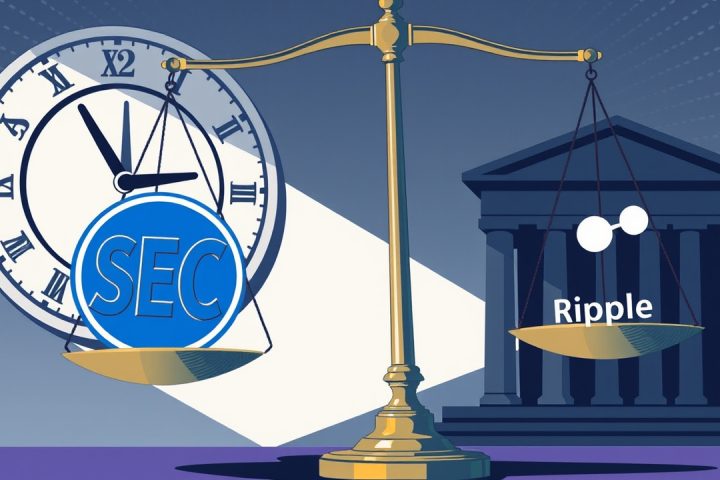Introduction
In a recent development highlighting the interplay between politics and finance, World Liberty Financial Inc. (WLFI) has set its sights on launching a new stablecoin called USD1, which is pegged at a 1:1 value to the US dollar. The primary motivation behind this initiative is believed to stem from the connections that the Trump family has within governmental circles, possibly facilitating smoother operations for this venture.
Launch and Initial Developments
This stablecoin officially kicked off its soft launch on April 12, as evidenced by the establishment of the first liquidity pools for USD1 on major decentralized exchanges including Uniswap V3 and PancakeSwap V3. Since its initiation, USD1 has rapidly established itself across over ten different protocols and applications. As a project intimately linked to President Trump’s family, USD1’s unveiling has garnered significant attention within the cryptocurrency space, especially with its forthcoming extension to major blockchain platforms such as Ethereum, BNB Chain, and Tron.
Financial Backing and Security
While Ethereum is seen as a reliable partner, the motivations for using BNB Chain and Tron may also include commercial benefits. Notably, Binance recently raised $2 billion for its MGX project using USD1, boosting the stablecoin’s market valuation by the same amount. Significant financial backing also comes from Sun Yuchen, a prominent investor who injected $75 million into WLFI’s treasury.
USD1 aims to ensure stability and consumer trust by being underpinned by US short-term Treasury bonds, dollar deposits, and equivalent cash reserves. This security is bolstered through regular audits conducted by a certified third-party firm, with asset custody provided by BitGo, a reputable independent custodian. Moreover, the liquidity and trading dynamics are enhanced through services offered by BitGo Prime for institutional investors, ensuring ample trading liquidity.
Expanding Market Presence
Initially, USD1 was launched on the Ethereum and Binance Smart Chain networks. On May 14, BNB Chain officially began supporting USD1, having identified partnerships with various protocols—like Four.Meme and GMGN. Following this, WLFI co-founder Zack Witkoff stated on May 1 that USD1 will expand to be natively available on the Tron blockchain, effectively broadening its cross-chain capabilities. Notably, Justin Sun, the founder of Tron and substantial supporter of the project, has invested heavily into WLFI.
By mid-May, total circulation figures for USD1 had skyrocketed to approximately 2.13 billion tokens, positioning it as the fifth largest stablecoin by market cap, trailing behind USDT, USDC, DAI, and USDe. The immediate implications of USD1’s announcement were evident; significant liquidity pools were promptly established, with DWF Labs facilitating substantial deployments to the tune of $18 million. In addition to decentralization, USD1 is also making rapid moves into the centralized exchange realm—trading pairs for USD1 and USDT were introduced on platforms like HTX and MEXC starting May 7, employing promotional zero-fee structures for transactions.
Strategic Partnerships and Future Goals
In a notable mention, Eric Trump, WLFI’s head and son of Donald Trump, remarked that USD1 had been selected as the official stablecoin for the Abu Dhabi investment firm MGX in tandem with its $2 billion investment in Binance. During the Token2049 event in Dubai, he acknowledged the support from both MGX and Binance, hinting at a promising future ahead.
Nevertheless, on May 16, Binance’s Zhao Changpeng clarified that while MGX interacted with Binance using USD1, it was not connected to the Trump-related token known as TRUMP.
In addition to its financial positioning, USD1 has also recently entered several commercial and payment channels, primarily aimed at institutional clients. Witkoff reiterated that USD1 serves as a digital dollar built specifically for large-scale investors and institutions, optimized for cross-border transactions.
Community Engagement
Furthermore, on May 7, WLFI floated a governance proposal to airdrop USD1 to $WLFI holders, rewarding early adopters and expediting future initiatives. This proposal enjoyed overwhelming support with 99.96% approval from participating voters.
Conclusion
Thus far, USD1 has showcased its aspirational capabilities as a stablecoin born from the political legacy of the Trump family, with ambitious plans to challenge established players like USDC and USDT in the crypto market. Its trajectory remains closely watched across the financial landscape as it carves out its niche.




